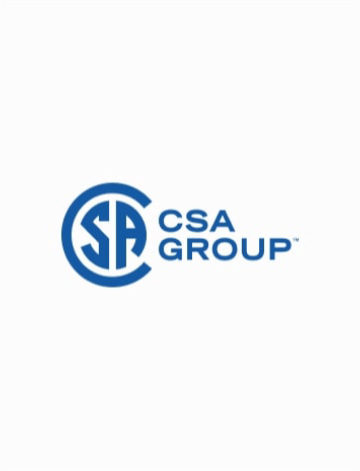Preface
This is the first edition of SPE-2.1 Series, Best practices for defueling, decommissioning, and disposal of compressed natural gas vehicle fuel containers and liquefied natural gas vehicle fuel tanks.
This Series consists of the following Documents:
a) CSA SPE-2.1.1, Best practices for defueling, decommissioning, and disposal of compressed natural gas vehicle fuel containers; and
b) CSA SPE-2.1.2, Best practices for defueling, decommissioning, and disposal of liquefied natural gas vehicle fuel tanks.
-------------------------------------------------------------------------------------------------------------------------------
SPE-2.1.1-18 -Best practices for defueling, decommissioning, and disposal of compressed natural gas vehicle fuel containers
Preface
This is the first edition of CSA SPE-2.1.1, Best practices for defueling, decommissioning, and disposal of compressed natural gas vehicle fuel containers. It supersedes CSA EXP2.1, published in 2016.
Scope
1.1 General
This Document contains requirements for the safe removal and disposal of compressed natural gas (CNG) containers from natural gas vehicle (NGV) service when the container
a) has reached its end of life as indicated by the date on the container label;
b) has been condemned in accordance with visual inspection guidelines;
c) is no longer of value to an owner; or
d) has been deemed a public nuisance or imminent hazard by the local authority (abandoned, confiscated, or seized containers).
It is the owner’s responsibility to ensure that the CNG containers on the vehicle are defueled and removed by a qualified agency at the end of the container life (EOL). Once the container has been removed, the custodian of the container is responsible to dispose of the container safely.
Note: Owners should obtain paperwork to document transfer of custody.
1.2 Procedure overview
In general, the best practice for disposal of all condemned containers requires adherence to the following procedures:
a) safely defuel and purge the contents;
b) remove the valve and other fittings;
c) obliterate all markings and labels;
d) destroy the container; and
e) properly discard the container.
1.3 Container type
NGV 2 high-pressure containers are designated as follows:
Type 1. Metal.
Type 2. Resin impregnated continuous filament with metal liner with a minimum burst pressure of 125% of service pressure. This container is hoop-wrapped.
Type 3. Resin impregnated continuous filament with metal liner. This container is full-wrapped.
Type 4. Resin impregnated continuous filament with a non-metallic liner.
1.4 Terminology
In this Document, shall is used to express a requirement, i.e., a provision that the user is obliged to satisfy in order to comply with the Document; should is used to express a recommendation or that which is advised but not required; and may is used to express an option or that which is permissible within the limits of the Document.
Notes accompanying clauses do not include requirements or alternative requirements; the purpose of a note accompanying a clause is to separate from the text explanatory or informative material.
Notes to tables and figures are considered part of the table or figure and may be written as requirements.
Annexes are designated normative (mandatory) or informative (non-mandatory) to define their application.
--------------------------------------------------------------------------------------------------------------------------------
SPE-2.1.2-18 - Best practices for defueling, decommissioning, and disposal of liquefied natural gas vehicle fuel tanks
Preface
This is the first edition of CSA SPE-2.1.2, Best practices for defueling, decommissioning, and disposal of liquefied natural gas vehicle fuel tanks.
Scope
1.1 General
This Document contains requirements for the safe removal and disposal of liquefied natural gas (LNG) tanks from natural gas vehicles (NGV) when the tanks
a) have been condemned in accordance with visual inspection guidelines;
b) are no longer of value to an owner; or
c) have been deemed a public nuisance or imminent hazard by the local authority (abandoned, confiscated, or seized tanks.
It is the owner’s responsibility to ensure that the LNG tank on the vehicle is defueled and removed by a qualified agency whenever deemed required. Once the tank has been removed, the custodian of the tank is responsible to dispose the tank safely.
Note: Owners should obtain paperwork to document transfer of custody.
1.2 Procedure overview
In general, the best practice for disposal of a tank requires adherence to the following procedures:
a) safely defuel the contents and purge the tank
b) remove the valves and other fittings
c) obliterate all markings and labels;
d) render the tank inoperable; and
e) properly discard the tank
1.3 Terminology
In this Document, “shall” is used to express a requirement, i.e., a provision that the user is obliged to satisfy in order to comply with the Document; “should” is used to express a recommendation or that which is advised but not required; and “may” is used to express an option or that which is permissible within the limits of the Document.
Notes accompanying clauses do not include requirements or alternative requirements; the purpose of a note accompanying a clause is to separate from the text explanatory or informative material.
Notes to tables and figures are considered part of the table or figure and may be written as requirements.
Annexes are designated normative (mandatory) or informative (non-mandatory) to define their application.


